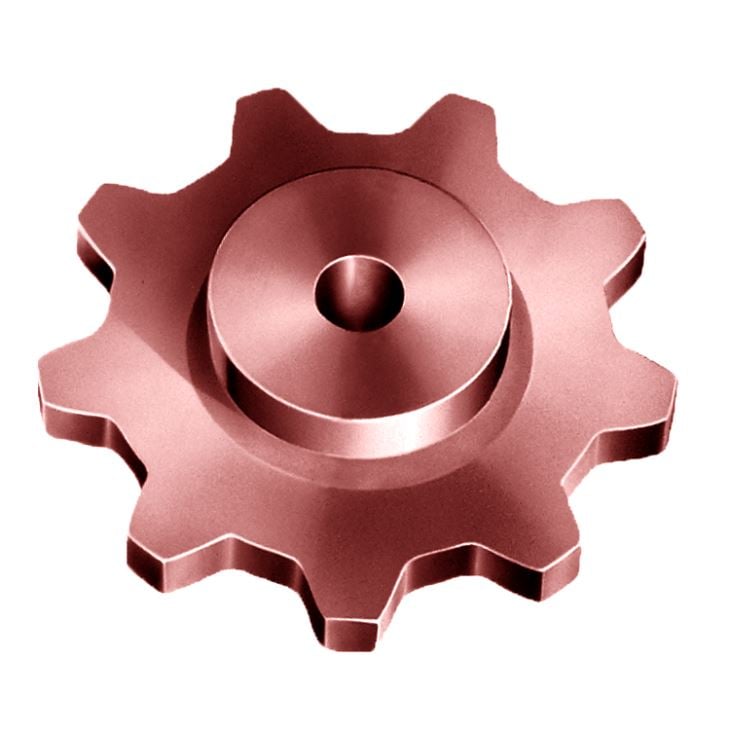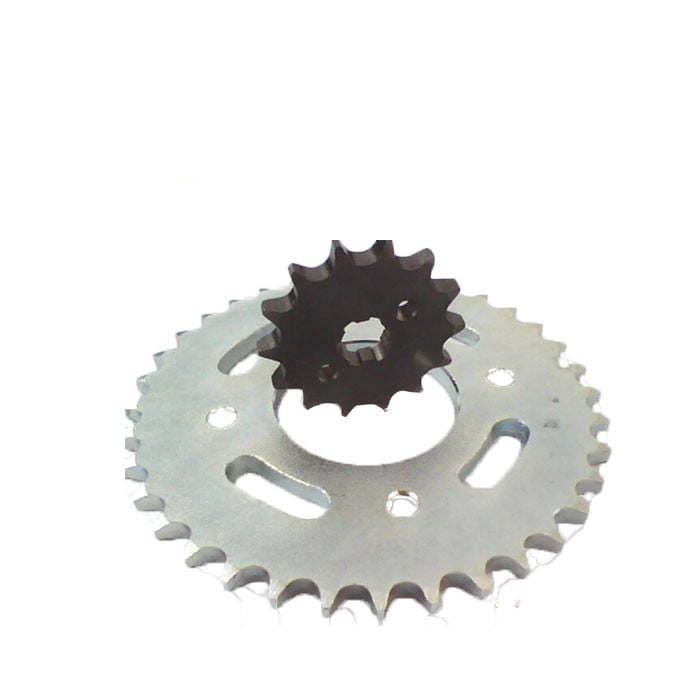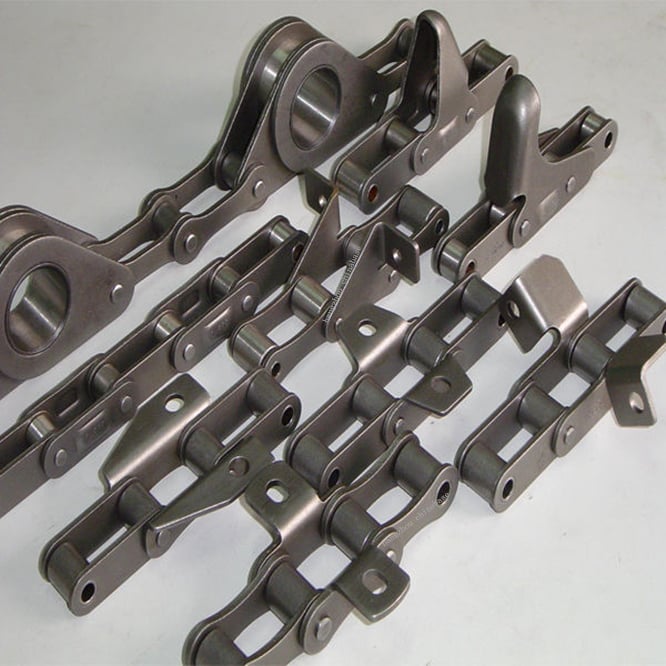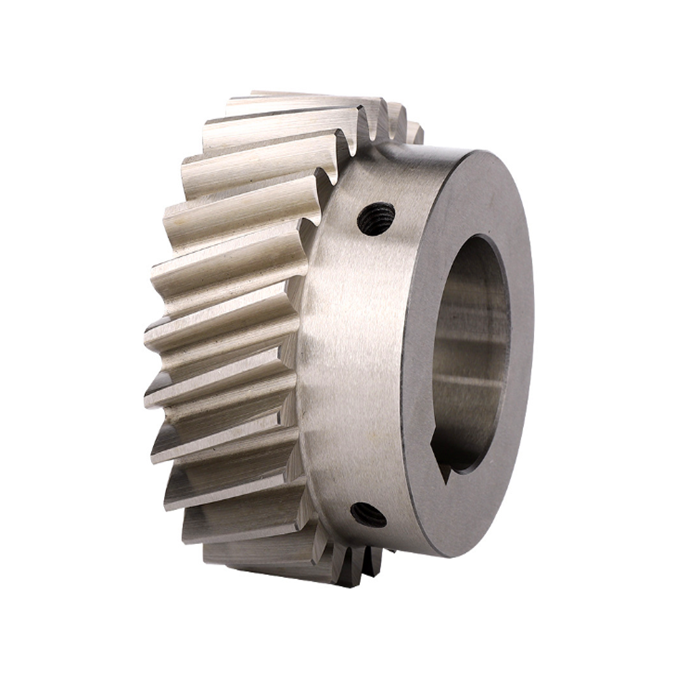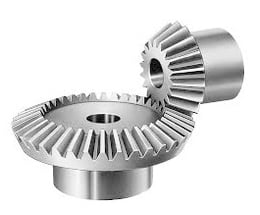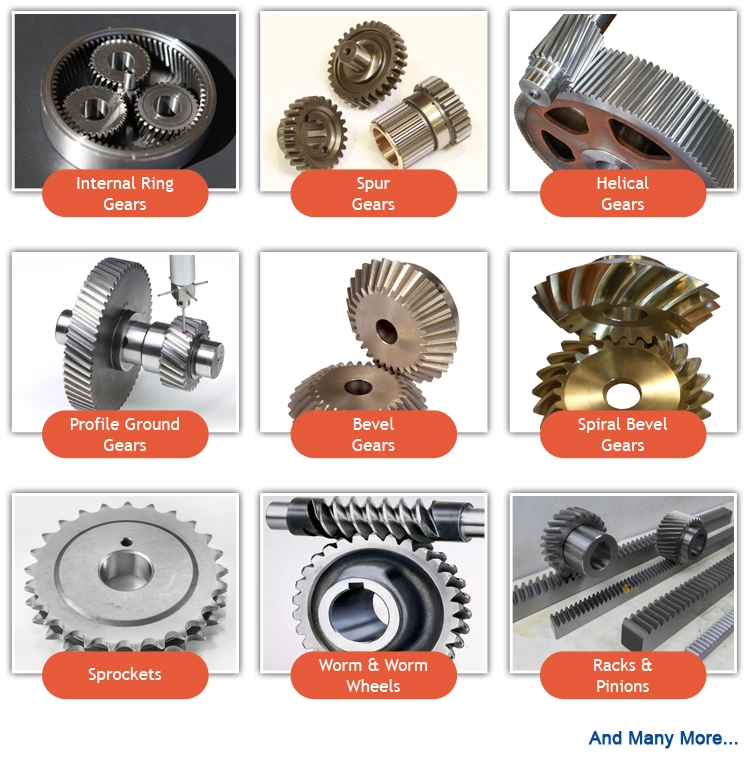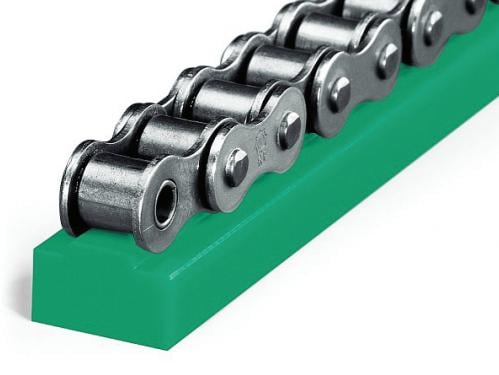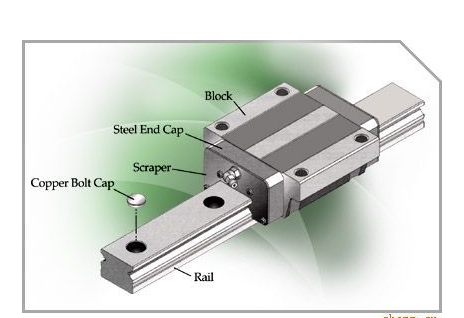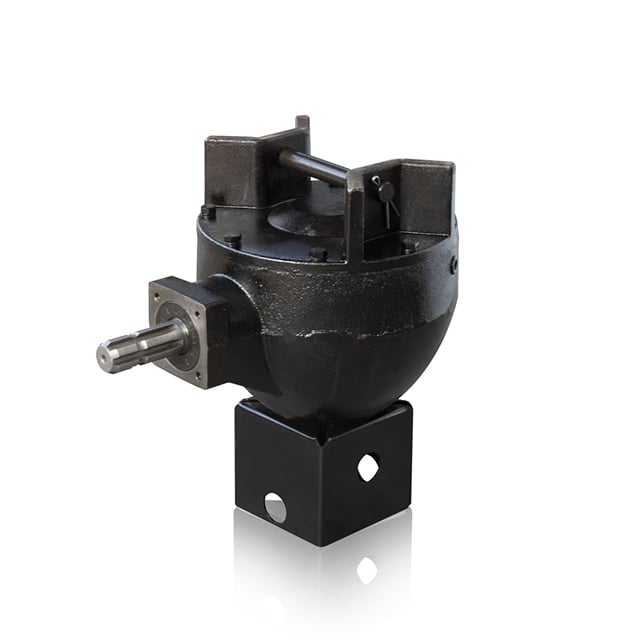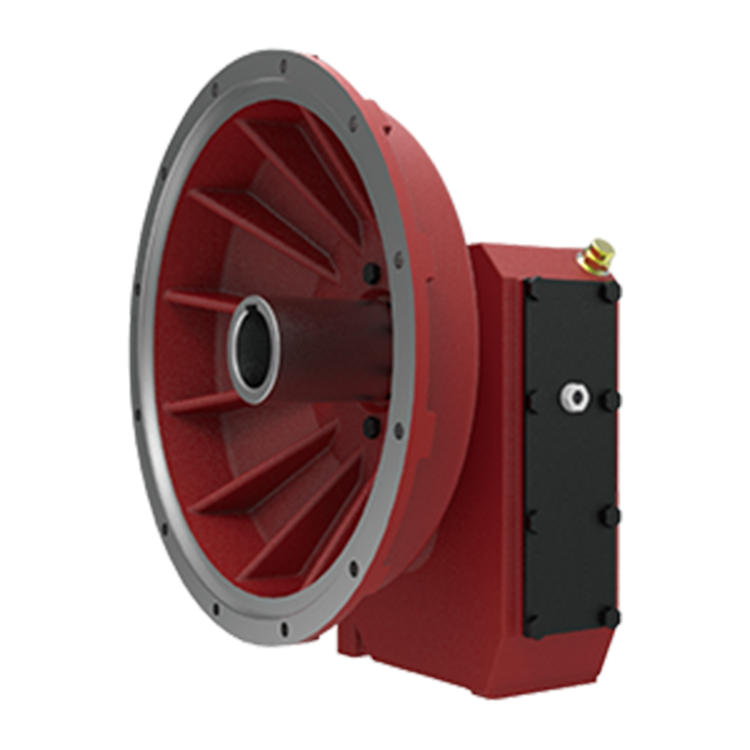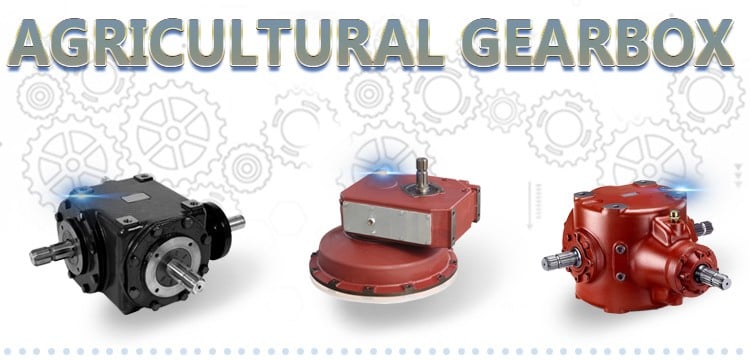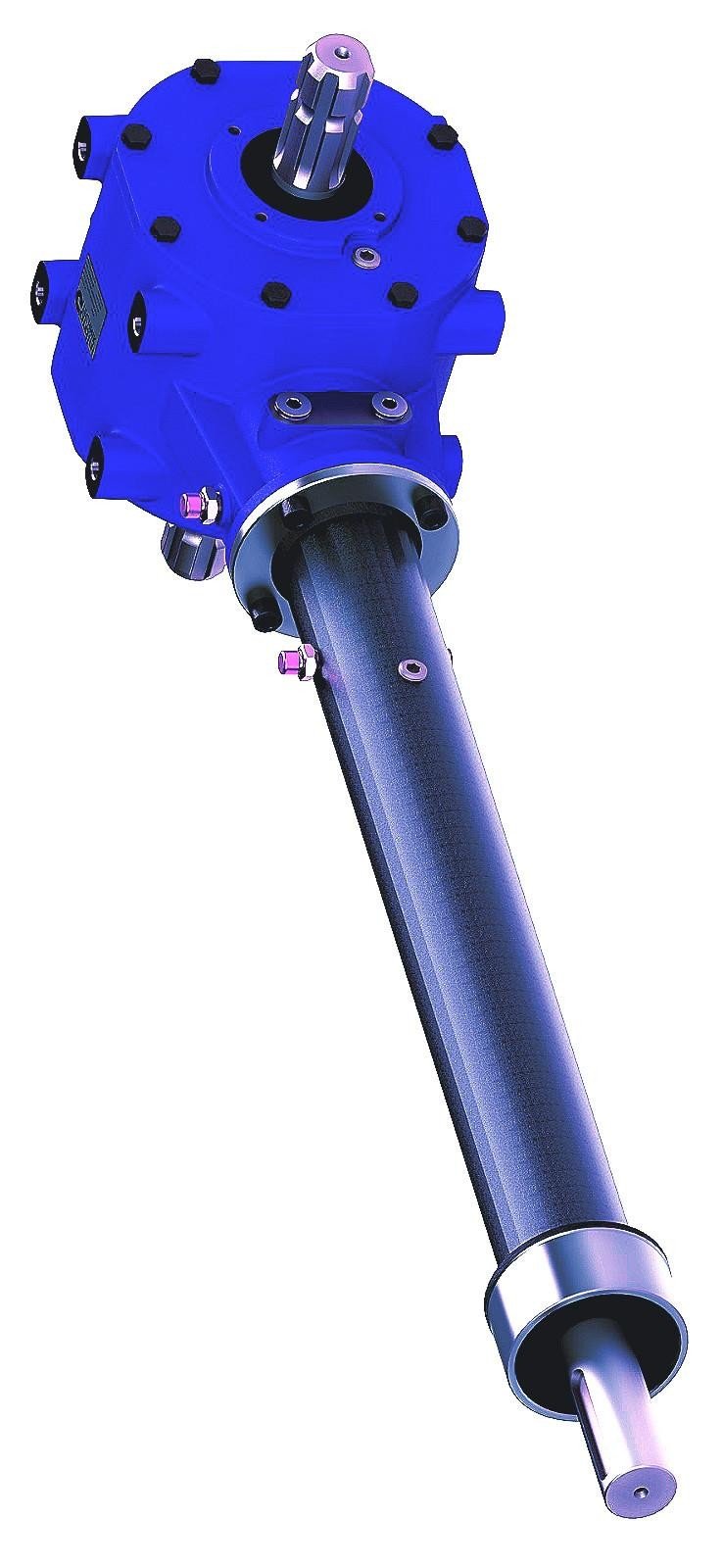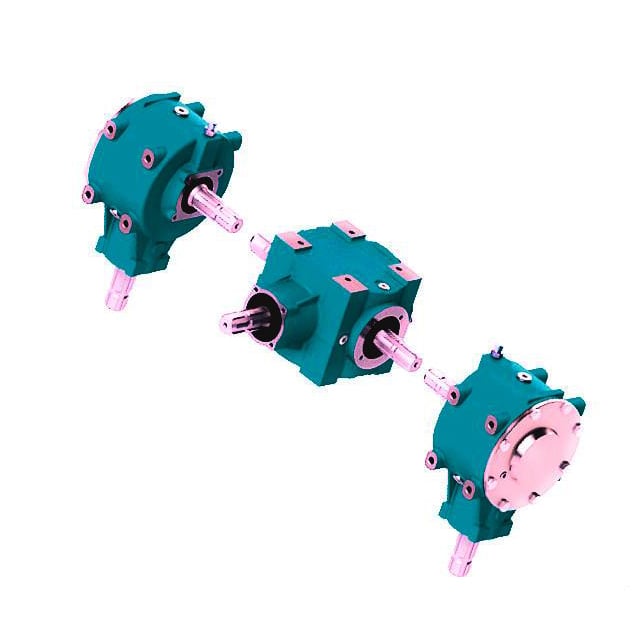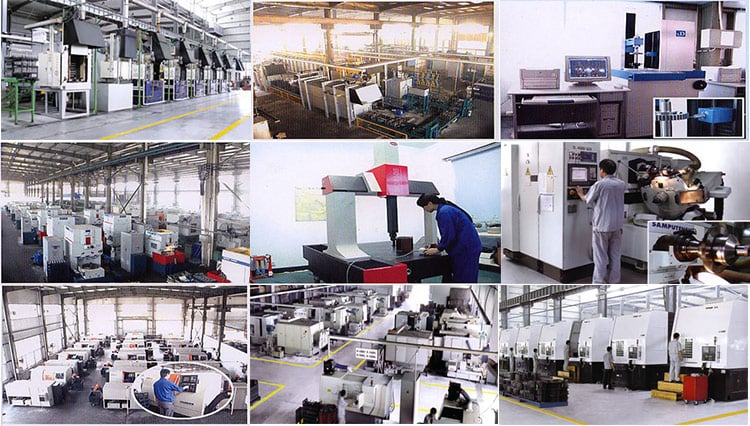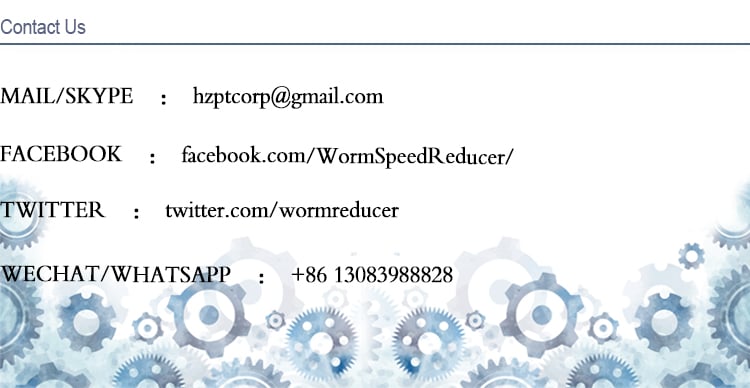Product Description
Product Description
1.Teeth Profile:
|
HTD: |
3M,5M,8M,14M,20M |
|||
|
T&AT: |
T2.5,T5,T10, AT5,AT10,AT20 |
|||
|
STPD: |
S2M,S3M,S4.5M,S5M,S8M,S14M |
|||
|
RPP: |
5M,8M,14M,20M |
|||
|
PGGT (PowerGrip GT): |
2MR,3MR,5MR,8MR,14MR |
|||
2. Materials:
Aluminum timing pulleys
Characteristics:
1.suitable for moderate power transmission
2.light weight / reduced rotational inertia
3.moderate chemical and corrosion resistance
4.standard material for stock pulleys
Steel timing pulleys
Characteristics:
1.suitable for high power transmission
2.durable
3.limited chemical and corrosion resistance
4.aesthetic material
3.Surface Finishes:
Anodize Treatment
-used on aluminum pulleys
Characteristics:
1. Increased chemical and corrosion resistance
2. Available in natural, black, or colored
3. Limited increase of surface hardness
4. Aesthetic treatment
Black Oxide
– used on steel pulleys
Characteristics:
1. Increased chemical and corrosion resistance
2. Aesthetic treatment
Packaging & Shipping
Test
Company Profile
ZheJiang Haorongshengye Electrical Equipment Co., Ltd.
1. Was founded in 2008
2. Our Principle:
“Credibility Supremacy, and Customer First”
3. Our Promise:
“High quality products, and Excellent Service”
4. Our Value:
“Being Honesty, Doing the Best, and Long-lasting Development”
5. Our Aim:
“Develop to be a leader in the power transmission parts industry in the world”
|
6.Our services: |
1).Competitive price |
|||
|
2).High quality products |
||||
|
3).OEM service or can customized according to your drawings |
||||
|
4).Reply your inquiry in 24 hours |
||||
|
5).Professional technical team 24 hours online service |
||||
|
6).Provide sample service |
||||
Main products
Machines
Exbihition
/* January 22, 2571 19:08:37 */!function(){function s(e,r){var a,o={};try{e&&e.split(“,”).forEach(function(e,t){e&&(a=e.match(/(.*?):(.*)$/))&&1
| Manufacturing Process: | Hobbing |
|---|---|
| Material: | Carbon Steel |
| Surface Treatment: | Polishing |
| Samples: |
US$ 100/Piece
1 Piece(Min.Order) | Order Sample |
|---|
| Customization: |
Available
| Customized Request |
|---|
.shipping-cost-tm .tm-status-off{background: none;padding:0;color: #1470cc}
|
Shipping Cost:
Estimated freight per unit. |
about shipping cost and estimated delivery time. |
|---|
| Payment Method: |
|
|---|---|
|
Initial Payment Full Payment |
| Currency: | US$ |
|---|
| Return&refunds: | You can apply for a refund up to 30 days after receipt of the products. |
|---|

What is the role of belt pulleys in the automotive industry?
Belt pulleys play a vital role in the automotive industry, contributing to various systems and components within vehicles. They are essential for transmitting power, driving auxiliary systems, and ensuring the smooth operation of critical functions. Here’s a detailed explanation of the role of belt pulleys in the automotive industry:
1. Engine Power Transmission: Belt pulleys are integral to the power transmission system of an automotive engine. They are commonly used in serpentine belt systems, where a single belt is routed around multiple pulleys to drive various engine accessories. The crankshaft pulley connects to the engine’s crankshaft and is responsible for transmitting power to components such as the alternator, water pump, power steering pump, and air conditioning compressor. The rotation of the crankshaft pulley drives the serpentine belt, which, in turn, drives these auxiliary systems.
2. Timing Belt System: Belt pulleys are essential components in the timing belt system of an engine. The timing belt connects the engine’s crankshaft to the camshaft(s), synchronizing their rotation and ensuring precise valve timing. The crankshaft pulley, also known as the harmonic balancer, is connected to the crankshaft and drives the timing belt. The camshaft pulleys, often referred to as timing pulleys, are responsible for driving the camshafts and controlling the opening and closing of the engine’s valves. Proper timing belt operation is crucial for the engine’s performance, efficiency, and overall reliability.
3. Supercharger and Turbocharger Systems: In high-performance and forced induction engines, belt pulleys are utilized in supercharger and turbocharger systems. These systems compress the intake air to increase engine power output. Belt-driven superchargers and turbochargers use pulleys to drive the compressor, which forces more air into the engine’s combustion chambers. The pulleys in these systems are designed to withstand high speeds and loads, ensuring efficient and reliable operation of the forced induction system.
4. Cooling System: Belt pulleys contribute to the cooling system of automotive engines. The water pump pulley is connected to the water pump, which circulates coolant throughout the engine to dissipate heat. The rotation of the water pump pulley, driven by the crankshaft pulley, creates the necessary flow of coolant to regulate engine temperature. Proper cooling system operation is vital for preventing overheating and maintaining the engine’s optimal operating conditions.
5. Power Steering System: Belt pulleys are used in power steering systems to assist with steering effort. The power steering pump pulley is connected to the power steering pump, which pressurizes hydraulic fluid to aid in turning the wheels. As the crankshaft pulley drives the serpentine belt, power is transmitted to the power steering pump pulley, enabling power-assisted steering. Belt-driven power steering systems provide easier and more responsive steering control for drivers.
6. Air Conditioning System: Belt pulleys play a role in the automotive air conditioning system. The air conditioning compressor pulley is driven by the serpentine belt and is responsible for compressing and circulating refrigerant within the system. The rotation of the compressor pulley enables the air conditioning system to cool and dehumidify the vehicle’s interior, providing comfort to occupants. Belt-driven air conditioning systems are commonly found in most passenger vehicles.
7. Other Auxiliary Systems: Belt pulleys are also used in other auxiliary systems in vehicles, such as the alternator, which generates electrical power to charge the battery and power electrical components. Additionally, they are employed in systems like the vacuum pump for brake assist, power take-off (PTO) units in commercial vehicles, and various belt-driven pumps for systems like the fuel injection system and hydraulic systems.
In summary, belt pulleys play a crucial role in the automotive industry, contributing to power transmission, auxiliary systems, and critical functions within vehicles. Whether it’s transmitting power in the engine, driving timing belts or auxiliary systems, or assisting with cooling, steering, or air conditioning, belt pulleys ensure the efficient and reliable operation of automotive systems and components.

What types of belts are commonly used with belt pulleys?
Several types of belts are commonly used in conjunction with belt pulleys for power transmission in various applications. The choice of belt depends on factors such as the specific requirements of the machinery, the desired power transmission characteristics, environmental conditions, and the type of pulley system being used. Here are some of the most commonly used types of belts:
1. V-Belts: V-belts, also known as Vee belts, are one of the most widely used types of belts with belt pulleys. They have a trapezoidal cross-section and typically feature a fabric cover and a rubber-like compound. V-belts are known for their high grip and power transmission capabilities, making them suitable for applications with moderate to high loads and speeds. They are commonly used in industries such as automotive, industrial machinery, and HVAC systems.
2. Timing Belts: Timing belts, also called synchronous belts, have toothed profiles on the inner side that engage with corresponding teeth on the pulley. This toothed design provides precise power transmission and prevents slippage. Timing belts are commonly used in applications that require precise synchronization of shafts and accurate positioning, such as in robotics, printing machinery, and automotive engines.
3. Flat Belts: Flat belts have a rectangular cross-section and are typically made of materials such as rubber, fabric, or synthetic compounds. They are flexible and can be easily customized to various lengths. Flat belts are commonly used in applications where high speeds and low power transmission requirements are present, such as in conveyor systems, textile machinery, and packaging equipment.
4. Round Belts: Round belts, also known as round O-ring belts, are circular belts made of materials such as rubber or urethane. They are flexible and can be easily joined to form endless loops. Round belts are commonly used in applications that require a lightweight and flexible power transmission solution, such as in small appliances, office equipment, and material handling systems.
5. Ribbed Belts: Ribbed belts, also called multi-rib belts or serpentine belts, have a ribbed or grooved design on the inner side. These ribs engage with corresponding grooves on the pulley, providing increased contact area and improved power transmission efficiency. Ribbed belts are commonly used in automotive engines, where they drive multiple accessories such as alternators, power steering pumps, and air conditioning compressors.
6. Variable Speed Belts: Variable speed belts, also known as adjustable speed belts or link belts, are made of individual links or segments that can be easily connected or disconnected to adjust the belt length. This allows for stepless speed variation and flexibility in power transmission. Variable speed belts are commonly used in applications where speed adjustment is required, such as in milling machines, woodworking equipment, and industrial conveyors.
These are just a few examples of the types of belts commonly used with belt pulleys. Each type of belt has its own unique characteristics and is suitable for specific applications based on factors such as load capacity, speed requirements, precision, and environmental conditions. The selection of the appropriate belt is crucial to ensure efficient and reliable power transmission in the machinery and equipment utilizing belt pulleys.

Can you explain the different types of belt pulleys and their applications?
There are several different types of belt pulleys, each designed for specific applications and requirements. The choice of pulley type depends on factors such as the power transmission needs, speed control requirements, space limitations, and the type of belt or rope used. Here’s an overview of some common types of belt pulleys and their applications:
1. V-Belt Pulleys: V-belt pulleys are one of the most widely used types of pulleys. They have a trapezoidal groove profile and are designed to accommodate V-belts, which have a corresponding cross-sectional shape. V-belt pulleys are commonly used in applications that require high torque transmission, such as in industrial machinery, automotive engines, and HVAC systems.
2. Flat Belt Pulleys: Flat belt pulleys have a flat or slightly crowned surface without any grooves. They are used with flat belts, which have a rectangular cross-section. Flat belt pulleys are suitable for applications that require high-speed power transmission, such as in textile machines, printing presses, and conveyor systems.
3. Timing Belt Pulleys: Timing belt pulleys, also known as synchronous pulleys, have teeth or grooves that mesh with the teeth of a timing belt. This design provides precise and synchronous power transmission, making them suitable for applications that require accurate positioning and timing, such as in robotics, CNC machines, and automotive engines.
4. Variable Speed Pulleys: Variable speed pulleys, also called adjustable or variable pitch pulleys, allow for continuous speed control by adjusting the effective diameter of the pulley. They feature movable pulley halves or arms that change the distance between the grooves, altering the speed ratio. Variable speed pulleys are used in applications where adjustable speed control is required, such as in machinery with variable loads or in variable speed drives.
5. Step Pulleys: Step pulleys have multiple grooves of different diameters arranged on the same pulley. By changing the belt position between these different grooves, the speed ratio can be adjusted. Step pulleys are commonly used in machines such as drill presses, lathes, and milling machines, where a range of predetermined speeds is required for different operations.
6. Idler Pulleys: Idler pulleys are not directly involved in power transmission but are used to redirect and tension the belt. They help maintain proper belt tension, improve belt wrap around the pulleys, and assist in achieving the desired belt path. Idler pulleys are commonly used in automotive engines, HVAC systems, and other belt-driven systems.
7. Clutch Pulleys: Clutch pulleys are specialized pulleys that incorporate a clutch mechanism. They allow for on-demand engagement and disengagement of the pulley from the driven shaft. Clutch pulleys are commonly used in automotive applications, such as in alternators, where they enable efficient power generation while reducing drag during idle or deceleration.
It’s important to note that these are just a few examples of belt pulley types, and there may be other specialized designs based on specific application requirements. The selection of the appropriate belt pulley type depends on factors such as the power transmission needs, speed control requirements, load capacity, and the type of belt or rope used.
In summary, different types of belt pulleys, such as V-belt pulleys, flat belt pulleys, timing belt pulleys, variable speed pulleys, step pulleys, idler pulleys, and clutch pulleys, are designed for specific applications and requirements. Understanding the characteristics and applications of these pulley types allows for the proper selection and utilization of belt pulleys in various mechanical systems.


editor by CX
2024-04-04










 How do wheel pulleys handle different belt types and sizes?
How do wheel pulleys handle different belt types and sizes?






